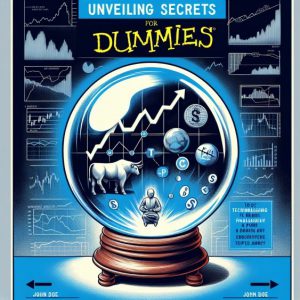
Finessing the Secrets to Financial Freedom: Innovate or Perish
Mar 20, 2024
Introduction
In the intricate web of existence, the pursuit of financial freedom is comparable to a grandmaster’s play in the cerebral arena of chess. It demands an astute blend of long-term strategic foresight, disciplined patience, and a keen intuition for preempting the market’s caprices. Drawing from my extensive experience as a financial analyst, I have meticulously dissected the rich patterns of wealth accumulation and delved deep into the psychological underpinnings of economic behaviour.
This endeavour is not solely about accumulating wealth but cultivating the sophistication and artistry needed to wield financial resources effectively. The ancient philosopher Pythagoras, who saw the world in numbers and harmony, believed in the interconnectivity of all things, suggesting that economic success, too, follows an orderly pattern governed by principles that can be understood and harnessed. On the other hand, Aristotle emphasized moderation and the importance of ethical considerations in life. This philosophy extends sage advice to wealth management, advocating for a balanced approach to acquiring and using money.
Embracing the wisdom of these philosophical giants, the art of elegant wealth is not merely about having money but mastering the nuances—the subtle finesse—that unlocks the gates to true financial independence. It is a journey that transcends mere economic transactions, touching upon the very essence of human values and the pursuit of a fulfilled life.
The Psychology of Wealth
The journey of finessing the secrets to financial freedom is not merely a tactical endeavour but also a psychological one. The collective behaviour of investors has a profound impact on the financial markets. Historical events offer clear illustrations of how mass psychology influences economic outcomes. The Tulip Mania of the 17th century is a prime example of how the value of tulip bulbs in the Netherlands soared to astronomical levels, only to crash dramatically, leaving many investors in financial ruin. This resulted from herd behaviour, where the fear of missing out drove prices to unsustainable levels.
Similarly, during the Dot-com Bubble in the late 1990s and early 2000s, investors, driven by the novelty of the internet and the potential of tech companies, poured money into sectors without solid financial foundations. The result was a significant market correction, which caused substantial losses for those who had followed the crowd without due diligence.
To find the secrets to financial freedom, a strategic investor must recognize when the market’s sentiment is swaying too far in one direction, whether it be optimism or pessimism. This awareness can protect one from the pitfalls of crowd psychology. For instance, Warren Buffett, known for his contrarian investment approach, advises to be “fearful when others are greedy, and greedy when others are fearful.” By not succumbing to the emotional whims of the market, Buffett has consistently outperformed market averages and built substantial wealth.
In pursuing finessing the secrets to financial freedom, it is crucial to maintain a disciplined approach informed by historical precedents and a keen understanding of the emotions driving market trends. Those who have mastered this aspect of investing have often found themselves on the right side of history, reaping the rewards of elegant wealth that last.
Contrarian Investing: Going Against the Grain
In contrarian investing, finessing the secrets to financial freedom is about identifying and capitalizing on the market’s irrationality. A contrarian investor uses scepticism about the prevailing market sentiment to guide their investment decisions, often taking a position contrary to the majority. When the market is gripped by undue pessimism, it may undervalue assets to the point where they represent a significant buying opportunity. The financial crisis of 2008 serves as a historical example. While most investors were selling in a panic, contrarian investors like Howard Marks of Oaktree Capital recognized the excessive fear. They began buying high-yield bonds and distressed debt, leading to substantial gains as markets normalized.
Conversely, when the market is overly optimistic, a contrarian investor will be cautious, recognizing that such optimism can inflate asset prices beyond their intrinsic value, signalling a potential bubble. The housing market bubble that preceded the 2008 financial crisis is well-known. Contrarian investors like John Paulson foresaw the unsustainable rise in housing prices and risky mortgage practices. By betting against the subprime mortgage market, Paulson’s firm made a historic profit as the bubble burst.
This approach requires rigorous analysis and the courage to act against the tide. Yet, the essence of finessing the secrets to financial freedom through contrarian investing is not merely in being different but being right at critical junctures where the majority has strayed from rational economic behaviour. It is about discerning actual value from market noise and being convinced to act upon it. Contrarian investing does not guarantee success on every occasion, but it embodies a philosophy that, when applied with diligence and patience, can lead to the art of elegant wealth.
The Chessboard of Financial Markets
Finessing the secrets to financial freedom within the financial markets is akin to a strategic game of chess, where each move is calculated, and every decision can have far-reaching consequences. The investing grandmasters, much like their counterparts on the chessboard, understand the importance of thinking several moves ahead, recognizing patterns, and adapting strategies to a constantly changing landscape.
Benjamin Graham, the father of value investing, is a historical exemplar of this chess-like foresight. Graham’s approach focused on fundamental analysis to identify undervalued stocks, and he was like a grandmaster patiently positioning his pieces, waiting for the opportune moment to strike. His philosophy, emphasizing the margin of safety and intrinsic value, has been the cornerstone for many successful investors, including his famous disciple Warren Buffett. Through Berkshire Hathaway, Buffett has consistently outperformed the market by implementing long-term, value-oriented strategies, demonstrating an unparalleled understanding of the economic chessboard.
Similarly, George Soros, known for his theory of reflexivity, made legendary moves by anticipating market shifts and capitalizing on them. His most notable gambit was betting against the British pound in 1992, which earned him the moniker “The Man Who Broke the Bank of England” and solidified his status as a financial grandmaster.
The common thread among these illustrious investors is their ability to see beyond the immediate moves and understand the deeper trends at play, much like a grandmaster sees beyond a single check and anticipates the checkmate. Finessing the secrets to financial freedom through the financial markets requires this level of strategic insight and the discipline to remain focused on the endgame despite the volatility and uncertainty of individual moves. It is about taking calculated risks and recognizing when to be defensive and when to go on the offensive — always with the ultimate goal of financial sovereignty in sight.
Historical Lessons in Wealth Accumulation
The pursuit of finessing the secrets to financial freedom is not a new phenomenon; it is as old as civilization itself. History provides a tapestry of examples from which we can distil principles of wealth management. The Medici family, which rose to prominence in the 15th century, built their fortune through banking-wise political manoeuvring and patronage of the arts, which solidified their social status and influence. Their ability to diversify their interests and investments is a lesson in not putting all one’s eggs in one basket—a principle that remains relevant in modern wealth accumulation strategies.
In more recent history, John D. Rockefeller’s Standard Oil empire showcases the power of vertical integration and the strategic control of supply chains. By controlling not just the oil wells but also the refineries and distribution, Rockefeller could amass unprecedented wealth. This example underscores the value of understanding every aspect of one’s industry and seeking to control or influence the entire production and distribution process when possible.
Warren Buffett‘s success further exemplifies the importance of a disciplined investment philosophy and the patience to stick with it. Buffett’s focus on long-term value rather than short-term gains and his famous aversion to investing in businesses he does not understand demonstrate the timeless principle of knowledge being power.
These historical figures took different approaches to finessing the secrets to financial freedom, yet they share common threads: diversification, strategic control, industry knowledge, and investment discipline. These enduring lessons continue to guide contemporary investors in their quest for elegant wealth. By studying the past, we can glean insights that inform present-day strategies, ensuring that the art of wealth accumulation is as much about understanding historical success as it is about recognizing future potential.
Conclusion: Mastering the Game
In conclusion, finessing the secrets to financial freedom is an art that combines knowledge, strategy, and psychological insight. Like a grandmaster in chess, the individual who masters this art understands that every move counts and that the game is won through patience, foresight, and, sometimes, the courage to go against the mainstream.
This outline provides a structure for an in-depth article on achieving financial freedom with elegance and strategic insight. Each section can be expanded with detailed analysis, examples, and actionable advice to guide readers on their journey to elegant wealth.
Mind-Bending Reads: Thought-Provoking Gems

Investing allows you to beat inflation and maintain the purchasing power of your money over time

Mass Psychology of Fascism: Unmasking Bombastic News

OVV Stock Forecast: Buy, Hold, or Sell?

What Does a Death Cross Mean in the Stock Market? Exploring Its Significance

Financial Freedom Book: A Pinch of Salt, a Splash of Whiskey

Unveiling Secrets: Technical Analysis for Dummies

The Primary Purpose of Portfolio Diversification is to Finesse Your Investments for Optimal Returns

The Enduring Reign: Why is the US Dollar the World’s Most Pre-eminent Currency?

Fiat Money Example: The Dollar Shines as a Prime Illustration

Dogs of the Dow ETF: BiggerBite, Less Work

How Do You Win the Stock Market Game? Effective Strategies

Black Monday 1987: Turning Crashes into Opportunities

Technical Analysis of Trends: Cracking the code

A Sophisticated Approach: Do Bonds Increase Returns When the Stock Market Crashes?



